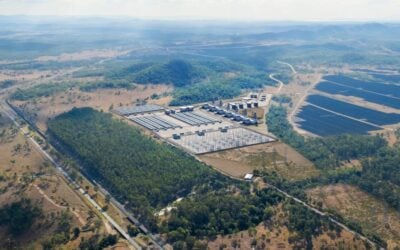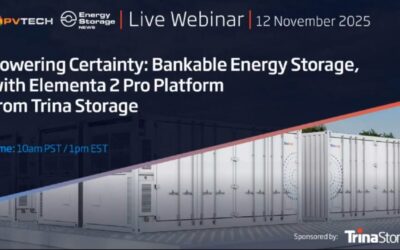Image: flickr user: Andy Armstrong.
To hit the best possible cost reduction outcomes, lithium-ion battery producers will have to scale-up to go beyond 1GWh of production capacity, but will hit a ceiling when they reach 10GWh, a new report claims.
Lux Research has produced a report which looks at the scope for cost reduction in Li-ion production and its possible effects on the dual industries of electric vehicles and stationary storage. The research and analysis firm claims that it has modelled the costs from the bottom up of battery production, an industry which Lux describes as “known for being highly secretive about its costs”.
The report predicts that by 2025, the best-in class for costs seen by leaders such as the Tesla/Panasonic ‘Gigafactory’ partnership will hit US$172 per kWh, a reduction of 35% from the prices seen today. Meanwhile the industry’s laggards could be stuck in 10 years’ time at US$229 per kWh. Interestingly, Lux also assumes that Chinese EV and battery company BYD, which recently also announced its intent to build large-scale production facilities, could hit similar benchmarks to Tesla/Panasonic by 2025.
According to Lux, the EV space will benefit greatly from efforts in cost reduction, with a lesser, but still significant effect on the stationary storage market. Meanwhile, Lux has predicted that by 2025, a fully-deployed large-scale storage system based on Li-ion cells could drop to US$498 per kWh by 2025. Tesla recently put a price on its utility-scale systems of US$250 per kWh, but this is thought to represent the price of the battery cell alone, minus other costs like installation.
Try Premium for just $1
- Full premium access for the first month at only $1
- Converts to an annual rate after 30 days unless cancelled
- Cancel anytime during the trial period
Premium Benefits
- Expert industry analysis and interviews
- Digital access to PV Tech Power journal
- Exclusive event discounts
Or get the full Premium subscription right away
Or continue reading this article for free
Dean Frankel, Lux Research analyst and one of the report’s co-authors, told PV Tech that going forward, investment in manufacturing facilities would be a necessity for companies looking to compete on cost reduction strategies. There would, however, be a limit to how far even scaling up could take these reductions.
“To compete on price in the coming years, Li-ion cell developers need to invest in further manufacturing capacity. In the report, we find that battery factory scale matters, in terms of delivered costs,” Frankel said.
“For example, a cell developer will see the greatest cost reduction going from 1GWh in capacity to 10GWh in capacity, with limited scaling benefits greater than 10GWh.”
In other words, according to Frankel, “to compete long-term developers need to invest in up to 10GWh of capacity”.
This range of production output capacity will inevitably lead to industry consolidation, Frankel said, at which point “as smaller Li-ion cell developers will be unable to compete, particularly in electric vehicles”.
PV Tech also asked what kind of value chain we might see forming in the stationary storage space, which Frankel said has a “much more complex value chain” than EVs. In particular, Frankel said, stationary storage companies will need to partner and pair up with downstream developers.
“Li-ion cell manufacturers will need to form supply and distribution relationships with strong downstream developers in a variety of markets. There is no one strategy for success, and it is unclear if cell developers are interested in getting into downstream business and competing head to head with current customers like Stem, Green Charge Networks or on the larger end AES Energy Storage,” Frankel said.
According to Dean Frankel of Lux, it is not yet clear if battery developers will go downstream and compete directly with the likes of Stem, Green Charge Networks and AES Energy Storage. Image: Stem.
Tying in their battery products with end use applications will be an important aspect of manufacturers who hope that demand will match supply, Frankel also said. Inverter suppliers and storage operators would be appropriate partners in this, as it would “ensure…battery cells can gain the most market exposure and can work seamlessly with all project hardware”.
Another important area of the industry that needs to be fostered is in standardisation and certification, according to Frankel.
“Li-ion cell developers need to work in tandem with warranty groups, certification protocols like UL, and the energy storage system developers (or operator) to ensure that its cells perform according to the warranty and financing terms. Doing so could increase market adoption and open up new pools of capital.”
Frankel also said there are other factors at play in the scope of cost reduction, not least of all possible advances in cathode technology and competition between the various sub-chemistries of lithium-ion.
The latest Lux report does not cover the likely effects of the projected battery cost reductions on the economics of solar adoption, another often-talked about aspect of the nascent energy storage industry. Frankel said however that another Lux report planned for later in the year will deal with this topic in detail.





